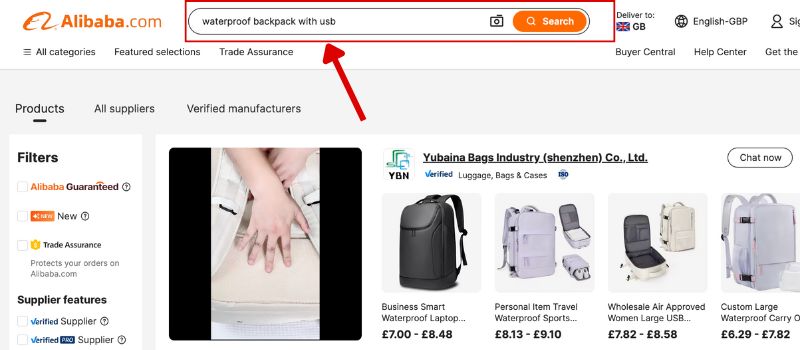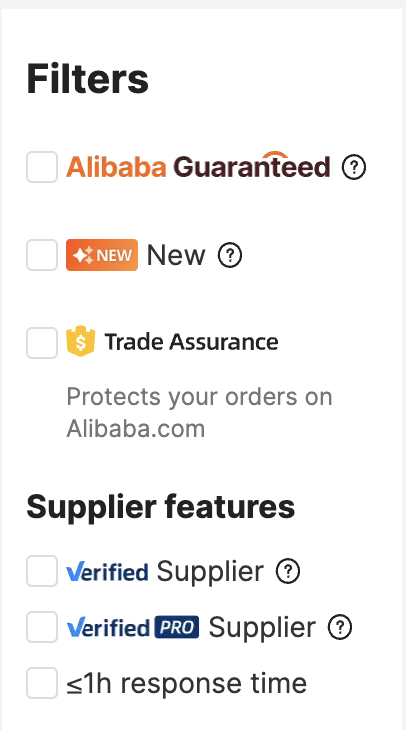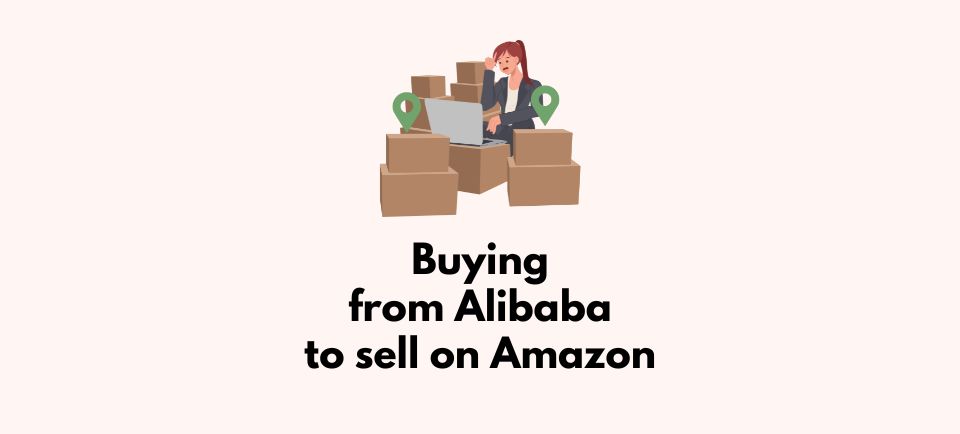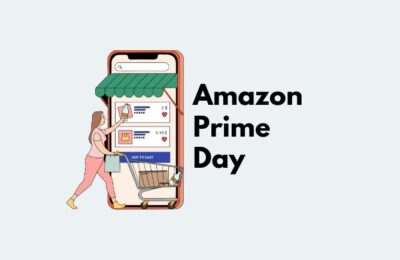The business model of buying from Alibaba and selling on Amazon FBA has gained popularity due to its potential profitability. This guide delves into every aspect of this model, from market research and product selection to finding reliable suppliers and ensuring compliance with Amazon’s policies.
Market Research
Search Volume and Trends
Market research is the cornerstone of a successful Amazon business. Tools like Jungle Scout, Helium 10, and AMZScout provide valuable insights into product demand and market trends.
- Search Volume: High search volume indicates strong demand. Analyze tools like Google Trends and Keyword Scout to gauge interest over time. For example, if reusable water bottles consistently appear in high search volumes, it’s a strong candidate for consideration.
- Trends Analysis: Look for products that have steady or increasing search trends, avoiding those with high seasonality unless you plan for seasonal sales. Seasonal spikes can mislead you about the true demand of a product.

Competitor Analysis
Understanding your competition is vital to positioning your product effectively.
- Number of Competitors: Use tools like Helium 10’s Xray to see how many sellers are offering similar products. Avoid overly saturated markets unless you have a unique selling proposition.
- Pricing and Reviews: Check the pricing strategies and customer reviews of competitors. Look for gaps in the market, such as poor customer service or product quality, which you can exploit by offering a better product or experience.
Profitability Analysis
Cost Calculation
Calculating all costs accurately ensures you maintain profitability.
- Product Cost: This includes the cost per unit from Alibaba, including any customizations or special packaging.
- Shipping Costs: Factor in international shipping, customs duties, and any additional freight charges. Use services like Freightos to get accurate shipping quotes.
- Amazon Fees: Amazon charges referral fees, FBA fees, and storage fees. These can be significant, so use Amazon’s fee calculators to get precise estimates.
Profit Margin
A robust profit margin protects your business against unexpected costs and competitive pressures.
- Margin Analysis: Aim for a selling price that is at least three times your total product cost. For example, if your total cost per unit is $7 (including product cost, shipping, and Amazon fees), your selling price should be around $21 to achieve a healthy margin.
- Breakeven Point: Understand your breakeven point, the sales volume needed to cover all costs, ensuring you remain profitable under different scenarios.

Product Criteria
High Demand
Products with consistent and high demand ensure steady sales.
- Consistent Sales Data: Utilize tools to analyze sales history and identify products with stable demand. For instance, tech accessories often have consistent demand due to regular upgrades and replacements.
- Customer Needs: Address specific needs or problems. Products that solve a problem or add convenience are more likely to have sustained demand.
Low Competition
Selecting niches with manageable competition increases your chances of success.
- Market Saturation: Avoid overly saturated categories. Instead, find niches where you can provide unique value or differentiation.
- Niche Markets: Consider sub-categories or less popular variations of trending products. For example, focusing on eco-friendly variations of popular items can set you apart.
Small and Lightweight
Smaller and lighter products reduce logistical costs, enhancing profitability.
- Shipping Efficiency: Smaller items incur lower shipping costs and are less expensive to store in Amazon’s warehouses. This is crucial for maintaining margins.
- Example Products: Items like jewelry or small electronics are ideal due to their low storage and shipping costs.
Durable and Low Return Rates
Durable products minimize returns and negative reviews, protecting your seller rating.
- Product Durability: Choose products less prone to damage during shipping. Durable items result in fewer returns and complaints, maintaining your seller reputation.
- Customer Feedback: Check reviews for common complaints about durability and address these issues in your product selection.
Finding Suppliers on Alibaba
Search Specific Keywords
Use precise keywords to find the right suppliers.
- Keyword Strategy: Use specific, detailed keywords. Instead of “backpack,” search for “waterproof hiking backpack with USB charging port” to find suppliers with relevant products.
- Refine Search: Apply filters such as minimum order quantity (MOQ), price range, and supplier verification status to narrow down results.

Filter Results
Use Alibaba’s filters to find trustworthy suppliers.
- Verified Suppliers: Filter for verified suppliers and those offering Trade Assurance, ensuring a level of security in transactions.
- Trade Assurance: Opt for suppliers with Trade Assurance to protect your payments and ensure compliance with delivery and quality standards.

Evaluate Suppliers
Thoroughly vet potential suppliers before making commitments.
- Supplier Profile: Assess the supplier’s profile for key details like years in business, manufacturing capacity, and customer feedback.
- Factory Visits: If possible, visit factories or use third-party inspection services to verify manufacturing capabilities and working conditions.
Contact Multiple Suppliers
Engage with several suppliers to compare offerings.
- Compare Offers: Request quotes from multiple suppliers to compare prices, MOQs, and sample policies. This helps you find the best terms and conditions.
- Negotiation: Don’t hesitate to negotiate terms. Suppliers often have some flexibility, especially for larger orders.
You can find a supplier’s contact information on their profile page.

Order Samples
Always order samples before placing bulk orders. Business of buying from Alibaba and selling on Amazon requires high consistency.
- Sample Evaluation: Assess samples for quality, durability, and compliance with your specifications. Use these samples to make informed decisions about bulk orders.
- Product Testing: Conduct thorough testing of samples, including stress tests and usability assessments, to ensure they meet your standards.
Supplier Evaluation Criteria
Trade Assurance
This feature protects your transactions, ensuring suppliers meet delivery and quality commitments.
- Payment Protection: Trade Assurance secures your payments and offers a recourse if the supplier fails to meet the contract terms.
- Supplier Accountability: Suppliers are more likely to adhere to quality and delivery standards when participating in Trade Assurance.
Verified Supplier Status
Verified suppliers have undergone Alibaba’s verification process, providing additional trust.
- Verification Checks: Verified suppliers have passed checks for business legitimacy, manufacturing capacity, and trade history.
- Reliability: Choosing verified suppliers reduces the risk of fraud and ensures a higher level of reliability.

Response Rate
A high response rate indicates effective communication and reliability.
- Communication Quality: Suppliers with high response rates are more likely to address your concerns promptly and effectively.
- Timely Responses: Efficient communication is crucial for resolving issues and ensuring smooth transactions.
Reviews and Ratings
Positive reviews and high ratings from previous buyers reflect supplier reliability and product quality.
- Customer Feedback: Read detailed reviews to understand previous buyers’ experiences. Look for consistent positive feedback on product quality and supplier responsiveness.
- Red Flags: Be cautious of suppliers with frequent complaints about quality or delivery issues.
Conclusion
Buying from Alibaba and selling on Amazon can be a highly profitable business model with the right approach. Conduct thorough market research to identify high-demand, low-competition products. Ensure robust profitability through accurate cost calculations and maintain strong supplier relationships by vetting them rigorously. By also following these PPC guidelines, you can effectively navigate the complexities of this business model and achieve substantial success.





